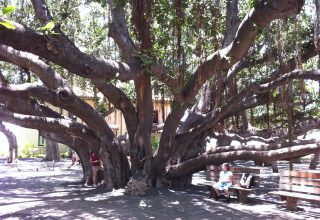
William Bergquist and Dorothy Siminovitch
An overarching challenge for any coach working within organizations is to recognize, accurately name and describe the issue that the client brings for the coaching effort. Facing the complexity of organizational realities, we, as coaches, must decipher the nature of the issue being presented: whether it is a puzzle, a problem or a mystery. Too often, action towards goals is taken without adequate attention given to the nature of the presenting concern. When the issue is identified as a puzzle, the primary role of the coach is to assist the client in working towards a uni-dimensional solution to the issue. When seeking to address a puzzle, the coach and client typically embrace a behavioral strategy of coaching—the focus being on the specific performance of the client in a specific setting towards a specific outcome.
When the coaching issues are identified as problems, then the coach must be prepared to assist the client in producing multiple solutions to the issues that keep surfacing from what was previously obscure or hidden and therefore are experienced as “messy”. The primary role of the coach when assisting a client who is facing one or more problems is clarifying, supporting and reflecting on difficult decisions that the client must make with regard to the problem(s). A decisional strategy of coaching is appropriate in this setting in that strategies are needed for managing inter-connected challenges. There may be an “epigenetic” quality to problems in that one solution begets the unfolding of another problem or a relational aspect that ignites other problems.
A third coaching challenge is faced when the client presents the issue to be addressed as a mystery encompassing elusive and hard to name issue(s). Rather than having a solution, the coach must assist the client in seeing that the mystery is an enigma to be managed rather than a puzzle or problem to be solved. Typically, the coach and client are working with fundamental values, dreams, hopes and fears when confronting a mystery.
Puzzles, Problems and Mysteries
With this brief introduction to the distinctions between puzzles, problems and mysteries, we will explore the relationship between each of these three types of coaching issues, the relationship between each type and how the principles of applied Gestalt theory can assist us in fully dealing with these three challenges. The gestalt approach stresses the importance of being a master of one’s awareness, where we recognize the ways in which paying attention enable us to widen our capacity to discriminate puzzles, problems and mysteries.
Puzzles
Puzzles are the everyday issues that anyone working in an organization must face. Puzzles have answers. They are uni-dimensional, in that they can be clearly defined and can readily be quantified or at least measured. Puzzles concern such things as changing a production schedule to accommodate a major new order or determining the appropriate fee for a new training program. Puzzles also concern changes in organizational policies to accommodate new government regulations, or an overall increase in wages to keep hourly workers from leaving the company. With puzzles, the parameters and boundaries are clear. The desired outcome of a puzzle-solution process can readily be identified and is often important to only a small number of organization members.
Researchers who study complex systems use the metaphor of landscapes to distinguish a puzzling situation from other types of challenges being faced in various systems (including organizations). They point to the image of a single, dominant mountain peak when describing one type of landscape. Often volcanic in origin, these imposing mountains are clearly the highest point within sight. For those living in or visiting the Western United States, we can point to Mt. Rainer (in western Washington) or Mt. Shasta (in northern California). Mt. Fuji in Japan also exemplifies this type of landscape. You know when you have reached the highest point in the region and there is no doubt regaining the prominence of this peak. Similarly, in the case of puzzles, one knows when a satisfactory solution has been identified. There is a clear sense of goal attainment and “closure” is reached. There is the satisfaction that comes from closure and a sense of tension release. Gestaltists refer to this as the Law of Pragnanz—that is the need and desire for “good closure”. Human beings are motivated to “solve” issues and puzzle solving creates satisfaction. One can stand triumphantly at the top of the mountain/puzzle, knowing that one has succeeded and can look back, appreciatively, down to the path followed in reaching the solution/peak.
Problems
There is a second type of issue that many contemporary leaders face. We identify these issues as problems. Problems can be differentiated from puzzles because there are multiple perspectives that can be applied when analyzing a problem. Several possible solutions are associated with any one problem and multiple criteria can be applied to the evaluation of the potential effectiveness of any one solution. Moreover, multiple problems mean management of multiple boundaries, each boundary corresponding to the respective issue.
There are many more cognitive demands being placed on us when we confront problems than when we confront puzzles—given that problems do not have simple or single solutions. Problems are multi-dimensional and inter-disciplinary in nature. Any one problem can be viewed from many different points of view—thus it is unclear when they have been successfully resolved. Donald Schön called these issues “messes.” For example, we find a technical solution and realize that the problem has financial implications. We address the financial implications and soon find that there are a whole host of managerial concerns associated with the problem. Problems that exist in contemporary organizations often concern such things as personnel policies (that are not forced by new government regulations), compensation systems (that are not just wage increases but incentivize certain behaviors), productivity, morale, creativity, risk-taking, flexibility—and trust.
Problems are complex, concerning, and fraught with paradoxes. The outcome of the problem-solution process itself is of significant interest to multiple stakeholders. In many cases, problems confront us as dilemmas. We view the problem from one perspective—one reality—and take action to alleviate one part of the problem, and we immediately confront another part of the problem, often represented by an opposing stakeholder group which then also requires the capacity to shift to another perspective—what can be termed “another reality”. We tighten up our policies regarding new product development and find that creativity is dropping off. We increase the price of a service that we deliver in order to increase revenues and find that we are losing customers, thereby losing revenues.
At times we find that the problem is a set of nested dilemmas. One set of conflicting priorities exists within another set of conflicting priorities. For instance, we want to pay one employee a bonus, but know that if we do so other employees will be resentful and less likely to collaborate with their rewarded colleague. This dilemma, in turn, rests inside an even bigger dilemma: we want to increase salary and benefits to all of our employees, yet also are trying to keep down costs because the market in which our product is being sold is highly competitive. These are complex problems—not readily solved puzzles.
As organizational coaches, we often confront the challenge of helping our clients work with dilemmas and even nested dilemmas. Researchers and theorists who are seeking to understand complexity often describe the settings in which problems emerge as “rugged landscapes.” This type of landscape is filled with many mountains of about the same height, as compared with a landscape in which one mountain peak dominates (the landscape of puzzles). In the United States one can point to the Appalachian Mountains or to the Rockies as rugged landscapes. In Europe, one can point to the Alps. In a rugged landscape, one finds many competing viewpoints about which mountain is higher or which vista is more beautiful. There are multiple paths to the top of any one peak and it is often confusing as to whether or not one has actually accomplished something of worth when standing on top of any one of the mountains. A similar case can be made regarding the problematic dilemmas facing the 21st Century leader and the 21st Century coach who works with this leader. Dilemma-filled problems are rugged landscapes. There are multiple peaks, perspectives and pathways.
Coaches and their clients may not always recognize the multiple phenomena of the problem for what it is. New coaches and consultants tend to see problems in a limited or simplistic way, and attempt to deal with them as if they are puzzles. When that happens, clients dig themselves deeper and deeper into the complexity, seriousness, and paradox of “the problem.” What we often get as a result is what people often call a “mess.” This is the rugged landscape of many contemporary organizations.
Dilemmas, or paradoxes, are fundamentally about balancing or managing two or more opposed and equally valid interests. Whenever multiple stakeholders are involved, it is safe to expect a dilemma to present itself for the leader who sits in its center. Problems are seen according to the perspective of the stakeholders and multiple realities compound the complexity of problem resolution. Are government officials, legislative bodies, financial institutions or private citizens at fault and therefore accountable for solving the world-wide economic upheaval of the last three years? What multiple nested solutions will work over time, and how to balance the short term crisis affecting millions of people with the long term wellbeing of the country? Will the economic crisis have ended when the international stock market recovers? A “problem” of international dimension was the so-called “war on terror.” How to define terrorism? How to identify terrorists and how to find them? How to sustain civil liberties at the same time as providing a secure environment for citizens? What are the criteria for defining success? When would “the war” be over?
Barry Johnson (1992), the recognized authority of polarity management, suggests that only ongoing, intense consultation and practical negotiation among the different interested parties can help a system balance itself in real time. Human beings, especially high achieving ones, love to solve problems “once and for all.” The reality is that fewer and fewer of the dilemmas facing leaders today fit this category. As coaches, we have to resist simplification, and encourage dynamic feedback, consultation and collaboration as pragmatic approaches to our clients’ problems. We need to encourage the capacity and competence of being able to hold “multiple perspectives”, and what is experienced as multiple realities. Coaches and their clients need to train their eye to recognize equally legitimate but opposed interests. Coaches need to help their clients strategize and facilitate a deliberate consultation between the parties (as opposed to allowing demonization of either side).
As organizational coaches, we may already be finding (or soon will find) that polarity management itself is not always sufficient, for the polarities and the conditions underlying polarities are themselves changing. To return to our landscape metaphor, we may find as coaches that our clients are living in what has been called a “dancing landscape.” This is a landscape that is always shifting—like the turbulent landscape of geysers and thermal pools in Yellowstone National Park or of glaciers in Greenland or the Alps. Priorities in the dancing landscapes of many contemporary organizations are constantly shifting and new alliances between old competing polarities are being forged. Clearly, when a world of complexity collides with a world of uncertainty and a world of turbulence, the landscape begins to dance and we, as organizational coaches, must learn how to dance with our clients. This “dance” is a call to encourage adaptability and resilience as the all the issues move together and create further uncertainty.
Mysteries
As we begin to address the challenges associated with our client’s dancing landscapes we enter a domain in which problems seem to merge into mysteries. Mysteries operate at a different order than puzzles and problems. Mysteries are too complex to understand and are ultimately unknowable. A specific mystery is profound (desired outcomes are elusive but of great importance to many stakeholders) and awe-inspiring or just awe-ful. A mystery is often theological or philosophical in nature. It is inevitably viewed from many different perspectives that are systematic and deeply rooted in culture and tradition, Mysteries have no boundaries, and all aspects are interrelated. Mysteries are beyond rational comprehension and resolution, and they are viewed with awe and respect. An old anecdotal piece of Jewish humor says, “We do not believe in miracles but we count on them”. In recent years, this counting-on-miracles has been described as a positive “black swan” (an absolutely unpredictable and unprecedented event that is beneficial).
Mysteries are the unknown element that influences miracles. Depending on one’s perspective, they are the things “we take to God” or to the philosophical question that has no answer: Why did I get out of the World Trade Center while my desk mate perished? Why is there evil in the world? Why did lightning strike our building but not the one next to it? Why did my child die before me? Mysteries also encompass many positive events and moments of reflection: Why did I fall in love with this person? Why did this remarkable person fall in love with me? Why have I been so blessed in my professional life? How did I ever raise such an exceptional child? Why is this world blessed with such beauty in its sunrises and sunsets, in its mountains and oceans, in its many life forms? So profound is the presence and fascination with “mystery” which has always infused our world, that the poet David Whyte (Working Together) informs us:
The visible and the invisible
Working together to produce the miraculous,..
So may we in this life trust
To those elements we have yet to see
Or imagine, and look for the true
Shape of our own self, by forming it well
To the great intangibles about us.
In coaching conversations, such privileged discussions about mysteries may occur and not lead to an “outcome.” They often serve as perspective-raising instances, a way to view life from a spiritual and collective stance while also viewing the world from a vantage point less entangled in the weeds and issues of daily life.
Locus of Control
We perceive mysteries as taking place outside our sphere of control or influence. Psychologists call this an external locus of control and note that some people are inclined to view most issues as outside their control (that is, as mysteries). By contrast, puzzles are usually perceived as being under our control. Psychologists identify this perspective as an internal locus of control and note that some people are likely to view all issues as being under their control (that is, as puzzles).
Problems are usually complex mixtures of controllable and uncontrollable elements. To successfully address a problem, one typically needs a balanced perspective with regard to internal and external loci of control, a distinction coaches have to frequently help their clients make. One of the most helpful inquiries when confronting nested problems is to identify what is and what is not under the leader’s control, and to do that from a perspective that challenges the person’s immediate perceptions. A problem that is embedded in a rugged landscape is more likely to have components that are under at least the partial control of a client than is a problem embedded in a dancing landscape. Often, obscure or potential strengths can come to light when a leader realizes how much broader her span of control is in actuality, when compared to her self-limiting awareness—in other words, when she expands her internal locus of control.
The Challenges
A myriad of challenges are associated with the role of a coach in helping colleagues identify and address these three different kinds of issues. First, coaching clients typically want their issues to be puzzles they can control (or perhaps mysteries for which they have no responsibility). Puzzles can be solved and we know when we have solved them. Mysteries are outside our control, so we don’t have to feel responsible for resolving them. But problems—these are much more difficult to address. We have to determine which aspects of the problem are under our control and which aspects are not. This confusing mixture of internal and external control is inherent in problems, and so is the balancing of competing but valid interests represented by different stakeholders. That’s what makes them so difficult to address—and make them ripe for organizational coaching assistance.
A second challenge concerns the values of a coaching assignment. Coaches are often considered much more successful, in terms of both fortunes and fame, if they can “solve problems”—often by approaching them as puzzles. The beginner coach feels a great deal of satisfaction when he successfully helps a client analyze a situation, look at optional solutions and successfully implement a chosen set of actions. This is a proficiency that can help many people who feel stuck or unsure of a course of action.
Very experienced and highly competent coaches will be tempted by organizations (highly focused on a return on their investment) to “guarantee” certain outcomes in exchange for an attractive fee. While a coach who is confident of his competency and has the willingness to embrace maximum accountability, can hold out that the client will be close to “the top of her game” at the end of the assignment, what the coach cannot guarantee is that this will satisfy all the organization’s needs and expectations. In addition, in order not take complex problems and reduce them to puzzles, room must remain for qualitatively “measured” and much subtler changes involved in his client’s performance—the kind of changes that will actually have lasting, long-term impact beyond currently measurable results.
We must also ask about the paradox associated with the contract itself. What is going through the mind of the recipient of puzzle-based coaching, i.e. coaching where the coach has “guaranteed” certain outcomes? The recipient might be entertaining some of the following thoughts:
The coach gets paid if I’m more successful. This puts great pressure on me. What did I do wrong? But the organization is willing to invest $50,000 in me. I wonder if I’m worth $50,000? I feel guilty—or is it anger—that my performance is being judged so poorly that I am costing the organization $50,000. Or should I feel honored? What should I think about this coach? Does he really care about me or is he only motivated by the money? I could sure mess things up for him by performing better but not at the level that triggers his payment—and I would save the company $50,000! Why don’t they just give me this money as an incentive and I will perform at any level they want!
There is a related challenge associated with the distinction we have drawn. While coaches may be judged most successful if they always address measurable and relatively-simply puzzles, rather than complex problems, it is challenging problems embedded in rugged and dancing landscapes that a client brings to the coaching session. These problems of complexity, unpredictability and turbulence tend to be most amenable to the coaching process—particularly an appreciative approach to coaching. A masterful organizational coach is uniquely positioned to hear out, help a client reflect on, and bring new perspectives to a complex problem.
The Gestalt Figure-Ground Contribution
Perceptual orientation and the capacity to differentiate puzzles, problems or mysteries can be assisted by the power of Gestalt psychology and methodology. How issues are perceived is a core question of perception identified as “figure-ground” recognition. The immediate context one is always part of is understand as the ground but what gets attention out of one’s ground of possibility is understood as “the figure”. There is some universality in the global issues—the figures that people pay attention to such as weather, traffic, and obvious safety issues. This universality is closely associated with globally -based perspectives. There is considerable difference, however, in terms of what people notice as “figure”. Human variability influences what we perceive and respond to out of the ground of possibility.
It may be that there is a preference in recognizing presenting issues as puzzles to be readily “solved”. Like the lone mountain (Rainer, Fuji), a puzzle looms as a dominant figure that is easier to “take in” and respond to. The ground around the puzzle is lost or forgotten as only the figure commands attention. Context is unimportant. One has only to scale the mountain or solve the puzzle to be declared a success and to savor the triumphant achievement. Gestalt theory even predicts a rush for the puzzle as the perceived figure. This reframing of an issue as a puzzle allows for a more simplistic approach to action and faster satisfaction in the closure experience.
Field Independence/Dependence
“Figure” and “ground” always exist in relationship to each other. The Gestalt figure is the focus of attention, or image, while the Gestalt ground is the background against which the image appears or is defined. The nature of issue recognition is vital for the coach (as it is for every sentient being). Decisions need to be made about what will be the figure and what will be the ground. Many years ago, Herman Witkin conducted a series of experiments in which he showed that some people make decisions based heavily on the ground or context in which the decision exists. He identified these people as “field dependent.” Other people tend to be more “field-independent”—meaning that they are able to focus on and make decisions regarding the figure (focal issue) without being distracted by the ground/context.
While on the surface it would appear that the field independent subjects were more cognitively “mature” than those who are field-dependent, we may find that field independent clients are inclined to view the issues they face as puzzles—thereby isolating this issue from its context (field/ground) and oversimplifying the situation in which they find themselves. Conversely, the field-dependent client may be inclined to focus too much on the field/ground, thereby becoming easily distracted and readily discouraged given the restrictive potential inherent in most organizational fields (contexts).
Coaches can be of great value in assisting the field dependent client to be more focused in their work, strategizing the figures to focus on and the boundaries needed to attend assist the client. Similarly, for the client who is “field independent”, the client can assist the client by encouraging their appreciation and assessment of the organizational context (field) in which they are working. In a turbulent and fast paced environment, it is the field that must that holds the information for multi-problem issue management. Building appreciation for field issues assists safety and problem issue management. The latest oil spill disaster off the Louisiana cost speaks poignantly to the need to hold a larger capacity for field and multi-problem management. Conversely, the world celebrated as countries and companies came together to resolve the multiple field issues of saving Chilean miners from the deepest mining challenge possible.
Conclusions
Gestalt theory is powerful in helping us understand an important principle: we cannot recognize figures that are foreign to us. There is a natural tendency to become habituated to framing issues or “figures” in familiar ways. The capacity to discern what is in our ground of awareness is influenced by natural disposition, history, cultural and mores. A coach offers his or her perceptive to create interest and possibility for the client’s apprehension of other perspectives.
The challenge of identifying and living with a problem (rather than a puzzle) is thus not to be taken lightly—for this problem requires attention to the ground as well as the figure. We are no longer standing on a lone mountain peak; rather, we are standing somewhere in the midst of a rugged landscape, with many peaks and valleys, rivers to be crossed and multiple pathways to be navigated. And we can’t even be sure that our voyage has been worthwhile: are we standing on the tallest peak, have we discovered the most beautiful viewpoint, are we walking down the correct valley to get out of this labyrinthian landscape? Is this not an occasion for coaches to provide value service to their client?
In the case of the setting in which mysteries abound and landscapes are dancing, there are even greater challenges, for the field and group are now either blended (which is part of the “awe-full” nature of mysteries) or are changing positions (the ground becoming the field and the field becoming the ground as the landscape dances). As our clients face mysterious challenges, and the puzzling confusion between puzzles and problems we are best able to assist them by seeking out their fundamental beliefs and aspirations – elements of themselves that provide “grounding” and “centering” in the midst of chaos, confusion and change. It was the late Gertrude Stein who gained almost “twitter” fame when she reminded us, that, we cannot know the answer if we are not clear about the question.
________________________
*This essay is based in part on the writing of William Bergquist and Agnes Mura, coachbook: A Guide to Organizational Coaching Strategies & Practices, 2011.
________________________
William Bergquist, Ph.D.
An international coach and consultant, professor in the fields of psychology, management and public administration, author of more than 45 books, and president of a graduate school of psychology. Dr. Bergquist consults on and writes about personal, group, organizational and societal transitions and transformations. His published work ranges from the personal transitions of men and women in their 50s and the struggles of men and women in recovering from strokes to the experiences of freedom among the men and women of Eastern Europe following the collapse of the Soviet Union. In recent years, Bergquist has focused on the processes of organizational coaching. He is coauthor with Agnes Mura of coachbook, co-founder of the International Journal of Coaching in Organizations and co-founder of the International Consortium for Coaching in Organizations. His graduate school (The Professional School of Psychology: www.psychology.edu) offers Master and Doctoral degrees in both clinical and organizational psychology to mature, accomplished adults.
Dorothy E. Siminovitch, Ph.D.
Dr. Siminovitch MCC is principal of Gestalt Coaching Works and AWAREWORKS International, and a Master Certified Coach and consultant to organizational leaders, executives, and groups worldwide She is a faculty member of The Professional School of Psychology in California, and co-owner and faculty of the Eurasian Gestalt Coaching Program (EGCP) in Istanbul. She co-founded the International Gestalt Coaching Program (IGCP), the first Gestalt-based coach training program awarded International Coach Federation (ICF) certification. EGCP in Istanbul is the second Gestalt-based coach training program to gain ICF certification. Dorothy received her doctorate from Case Western Reserve University’s prestigious Department of Organizational Behavior. Her Gestalt institutional affiliation is with the Gestalt International Study Center based in Wellfleet, MA. She presents training and development opportunities at the Organization Development Network’s annual conference, the International Coach Federation Conference, and by invitation.
Download Article 1K Club



















